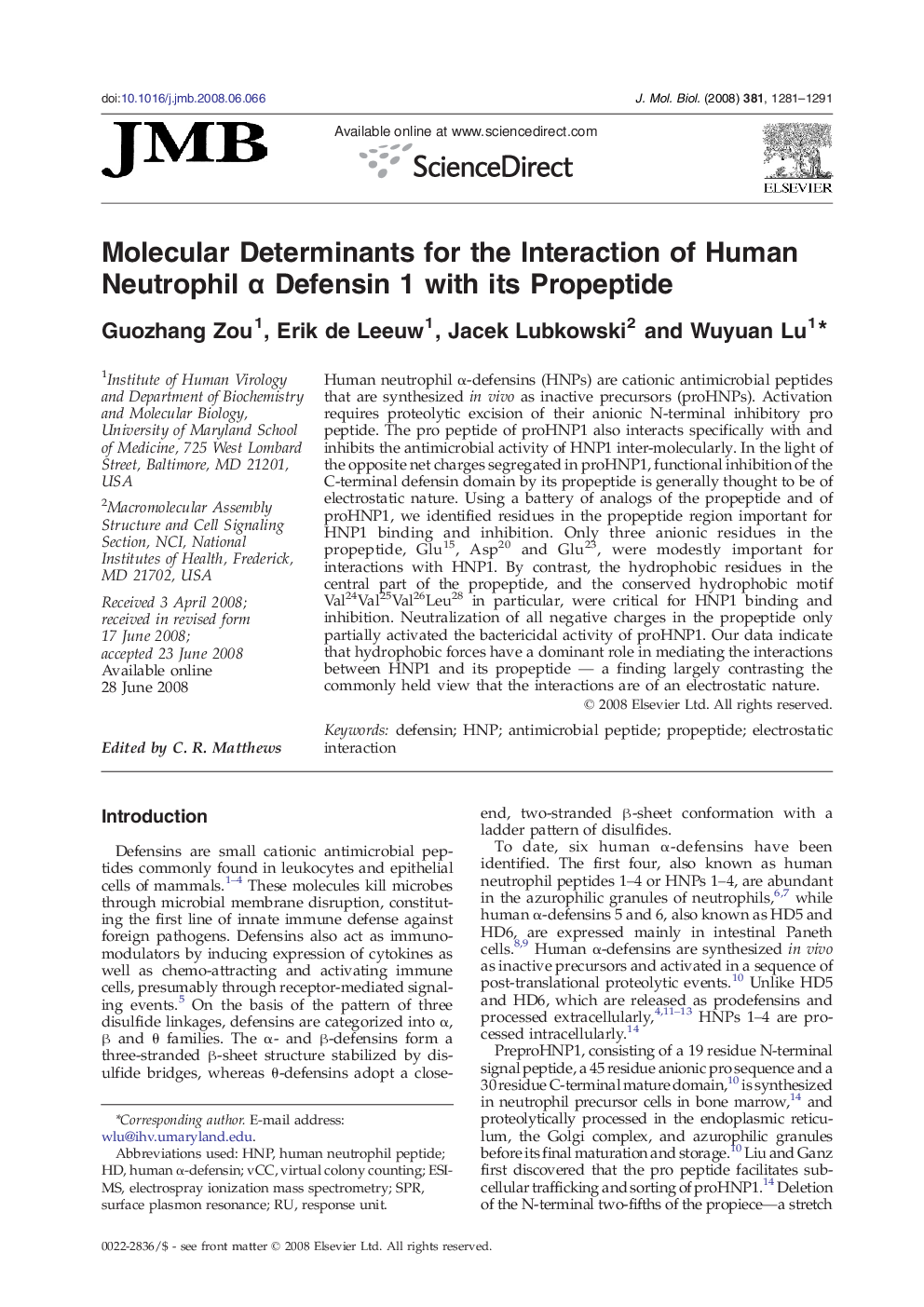| Article ID | Journal | Published Year | Pages | File Type |
|---|---|---|---|---|
| 2187294 | Journal of Molecular Biology | 2008 | 11 Pages |
Human neutrophil α-defensins (HNPs) are cationic antimicrobial peptides that are synthesized in vivo as inactive precursors (proHNPs). Activation requires proteolytic excision of their anionic N-terminal inhibitory pro peptide. The pro peptide of proHNP1 also interacts specifically with and inhibits the antimicrobial activity of HNP1 inter-molecularly. In the light of the opposite net charges segregated in proHNP1, functional inhibition of the C-terminal defensin domain by its propeptide is generally thought to be of electrostatic nature. Using a battery of analogs of the propeptide and of proHNP1, we identified residues in the propeptide region important for HNP1 binding and inhibition. Only three anionic residues in the propeptide, Glu15, Asp20 and Glu23, were modestly important for interactions with HNP1. By contrast, the hydrophobic residues in the central part of the propeptide, and the conserved hydrophobic motif Val24Val25Val26Leu28 in particular, were critical for HNP1 binding and inhibition. Neutralization of all negative charges in the propeptide only partially activated the bactericidal activity of proHNP1. Our data indicate that hydrophobic forces have a dominant role in mediating the interactions between HNP1 and its propeptide — a finding largely contrasting the commonly held view that the interactions are of an electrostatic nature.
